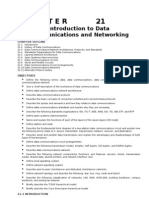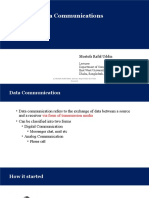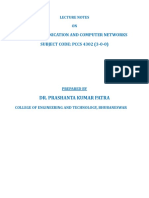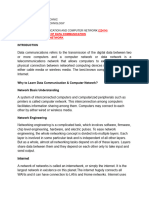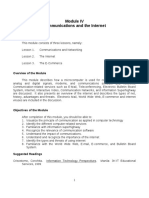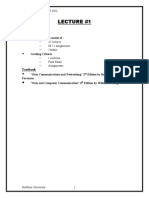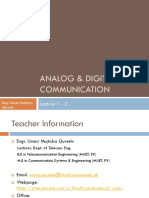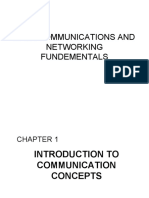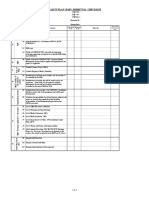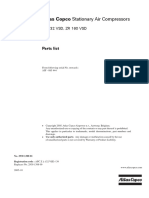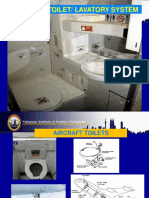0% found this document useful (0 votes)
19 views10 pagesChapter 1 Introdution To Data Communication
The document provides an overview of data communication, defining data types, communication processes, and key elements such as sender, receiver, and protocols. It details the evolution of data communication systems from telegraphs to modern digital networks, highlighting significant milestones and technologies like the internet and cellular networks. Additionally, it covers the characteristics, applications, and standards of data communication, emphasizing the importance of protocols in ensuring effective data exchange.
Uploaded by
sanchit5064Copyright
© © All Rights Reserved
We take content rights seriously. If you suspect this is your content, claim it here.
Available Formats
Download as PDF, TXT or read online on Scribd
0% found this document useful (0 votes)
19 views10 pagesChapter 1 Introdution To Data Communication
The document provides an overview of data communication, defining data types, communication processes, and key elements such as sender, receiver, and protocols. It details the evolution of data communication systems from telegraphs to modern digital networks, highlighting significant milestones and technologies like the internet and cellular networks. Additionally, it covers the characteristics, applications, and standards of data communication, emphasizing the importance of protocols in ensuring effective data exchange.
Uploaded by
sanchit5064Copyright
© © All Rights Reserved
We take content rights seriously. If you suspect this is your content, claim it here.
Available Formats
Download as PDF, TXT or read online on Scribd
/ 10











